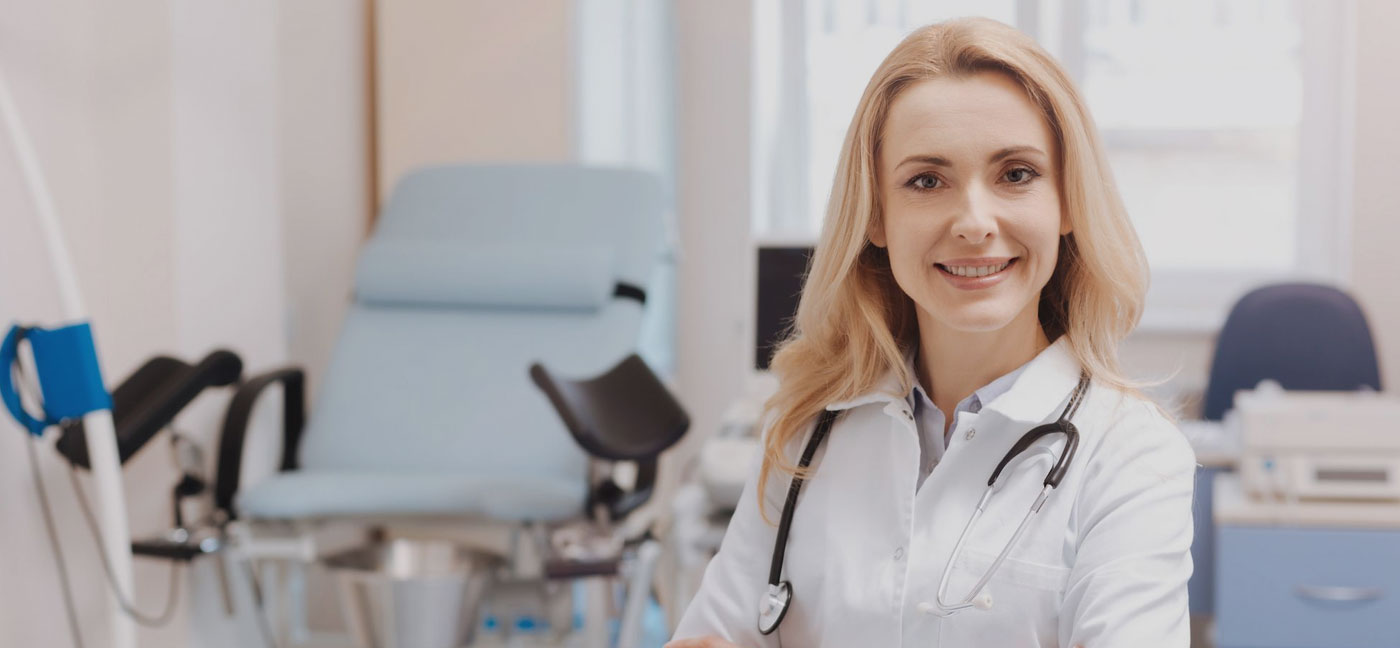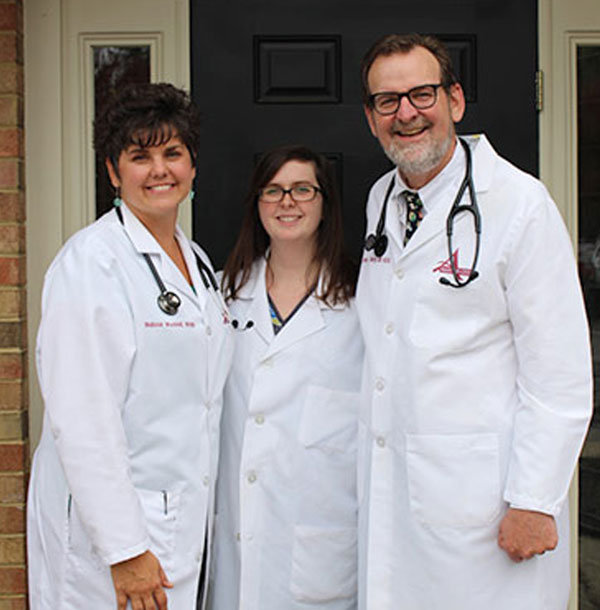What is endometriosis?
The tissue that normally lines the inside of the uterus is called the endometrium. In some women the endometrium grows outside of the uterus. When this happens a woman has a condition called endometriosis. The most common areas for this abnormal growth of endometrium are the reproductive organs (the ovaries, fallopian tubes, and uterus). Endometrium may also grow on the intestines, bladder, rectum, and the lining of the pelvic area and abdomen.
This misplaced tissue responds to the hormones of the menstrual cycle and bleeds each month in the same way the lining of the uterus responds to hormones. However, if the tissue is not in the uterus, the blood shed from the tissue has no way to leave the body. When the tissue bleeds, cysts, adhesions, and scar tissue form and the area around the endometriosis thickens. Very rarely, endometriosis becomes cancerous.
How does it occur?
Why some women develop endometriosis is not known. There are many theories, but none of them explains all cases. Some of the theories are:
- In some women during menstruation, some of the menstrual tissue backs up through the fallopian tubes and into the abdomen, where it attaches and grows.
- Endometriosis may be a genetic process or some families may have predisposing factors to edometriosis.
- Endometrial cells spread to other parts of the body through the lymph system or blood vessels.
- There is some endometrial tissue in the uterus that backs up in all women. The immune system may then destroy the misplaced tissue. Women who develop endometriosis, however, may have an immune system that is not able to destroy the misplaced tissue.

What are the symptoms?
Endometriosis affects each woman differently. During your menses, the misplaced tissue swells and bleeds just like the lining of the uterus. The following symptoms may begin suddenly or develop over many years:
- increased pelvic, back, or flank pain before or during the menstrual period
- pain during sex
- premenstrual spotting
- blood in the urine, painful urination, or feeling the need to urinate often during or after you menstrual flow
- abnormal or heavy menstrual flow
- painful bowel movements, diarrhea, constipation, or other intestinal problems during menstrual periods
- trouble becoming pregnant.
How is it diagnosed?
A menstrual history, pelvic exam and information about your symptoms are extremely important in diagnosing endometriosis. You may have blood tests and cultures taken to rule out infection as the cause of your pain.
An ultrasound will be needed in order to look at your ovaries and uterus for any other explanation of your symptoms.
You may need a procedure called a laparoscopy for diagnosis. You are given general anesthesia which causes you to sleep before the procedure so you will not feel any pain. Then a small cut is made near the navel and your abdomen is filled with a gas (carbon dioxide). Dr. Hardy inserts a tool called a laparoscope through the cut and into your abdomen to look at the organs and pelvic cavity. With the scope he can see the size, location, and number of endometrial growths. The endometriosis is removed or cauterized. All tissue that is removed is sent to the lab to help make a diagnosis. This is called a biopsy.
Other tests you may have are:
- CT (computed tomography).
- MRI (magnetic resonance imaging).
How is it treated?
Endometriosis is a disease that can get more severe as you grow older. However, there are many ways to lessen the symptoms and problems it causes. The treatment depends on the severity of the symptoms, the location and degree of endometriosis, your age, and your plans for childbearing.
If the only symptom is mild premenstrual pain, you may just need to take a pain-relief medicine such as aspirin or ibuprofen.
If your symptoms are more severe, you may be prescribed medicine, such as birth control pills, to control your hormones. The purpose of these medicines is to suppress the hormone stimulation of the endometriosis areas. Both the lining of the uterus and the misplaced endometrial tissue will decrease or stop bleeding each month. This should stop the buildup of cysts and scar tissue and swelling outside the uterus. The most effective drug treatment allows your body to heal the endometriosis as much as possible by stopping your menstrual periods for about 6 months. This is done by giving you gnrh antagonists such as Zoladex or Lupron. These hormones are given as a shot either in your abdomen or arm. You will receive 1 injection each month and it will cause you to go into a temporary menopausal state. You will also need to take a pill everyday through this time of therapy to help relieve any menopausal symptoms.
Sometimes a surgery called Laparascopy may be necessary, for example, if you have large pieces of endometrial tissue in your pelvis.
In severe cases, possible treatment is surgery to remove the organs containing the growths (such as the fallopian tubes, uterus, and the ovaries). If your uterus is removed, you will not be able to become pregnant (this is called a hysterectomy).
How long will the effects last?
No treatment has been found that is 100% effective. All current therapy offers some relief from the symptoms but not a cure. Endometriosis may come back or get worse after hormone therapy or surgery. Other conditions that are typically seen with persons that have endometriosis are Irritable Bowel Syndrome and Interstitial Cystitis (painful bladder syndrome). Having some additional testing to evaluate for these conditions may help alleviate your symptoms and increase the duration of relief.
How can I take care of myself?
Keep a careful record of your symptoms. The easiest way to do this is to assign a number to each of the symptoms you have and record them by number on your calendar for 3 months. Record all symptoms, including any time lost from work, school, or leisure activities. Report the symptoms to your health care provider. Take your calendar with you to your appointment. If you have not yet been diagnosed with endometriosis, your provider may not suspect endometriosis without this information.
To help ease your pain:
- Take warm baths.
- Rest.
- Wear loose clothing.
- Use a hot water bottle or heating pad on your abdomen.
- Avoid constipation by increasing the fiber in your diet.
- Do relaxation exercises.
- Take pain medicine as recommended by your provider.
For more information, contact the Endometriosis Association. This organization is a support group run by women with endometriosis.
Endometriosis Association International Headquarters
Phone: (800) 992-3636
Web site: http://www.endometriosisassn.org
What can be done to help prevent endometriosis?
Endometriosis is a condition that cannot be prevented or cured. However, treatment can help control the symptoms.

